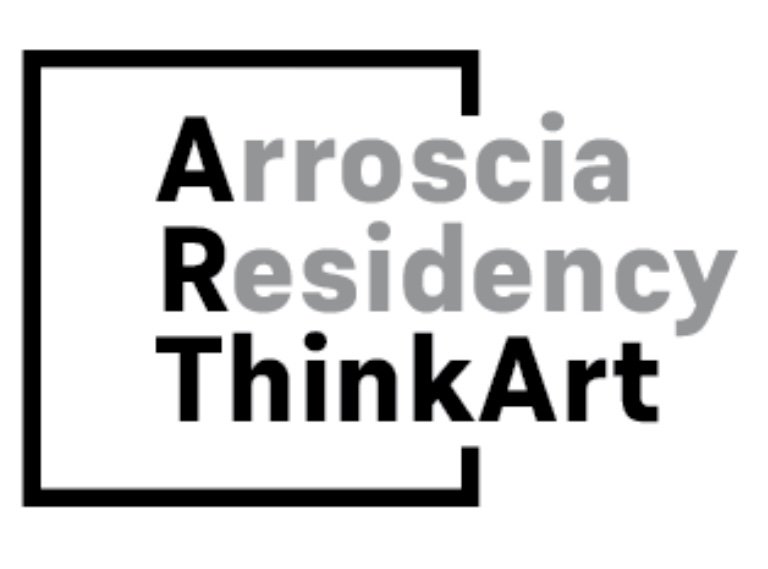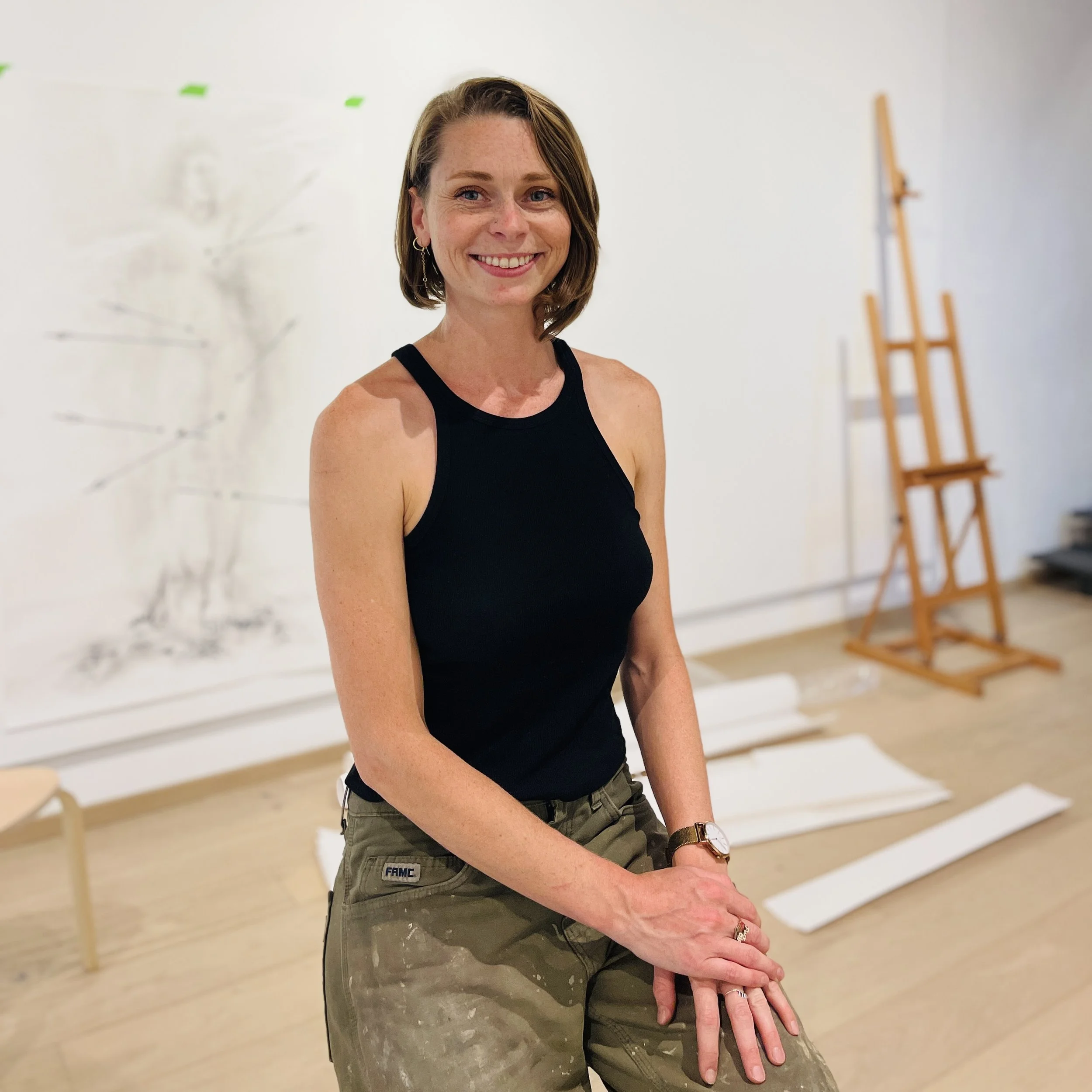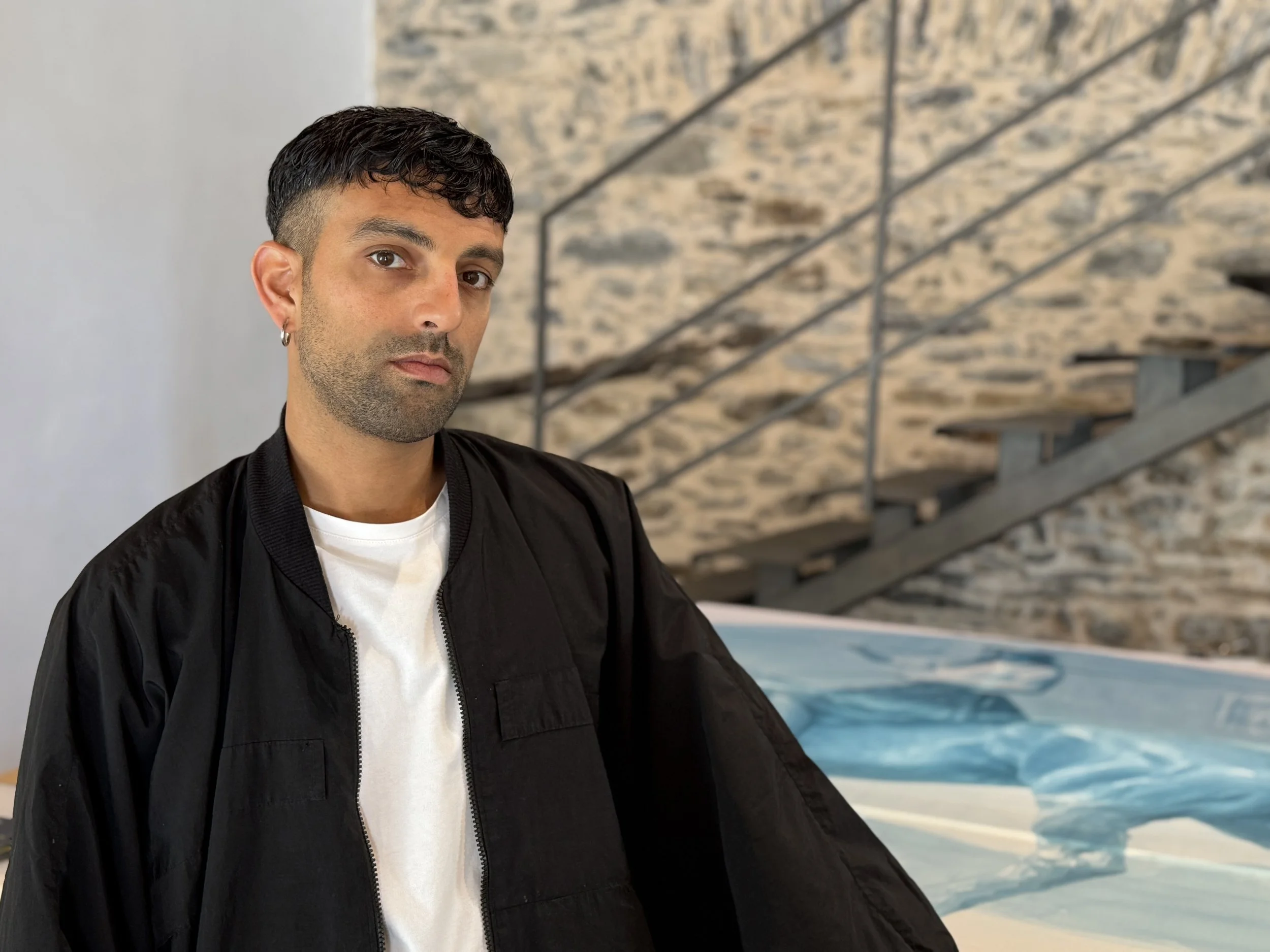THE ARTISTs-IN-RESIDENCE
WELCOME the 2025 ARTISTs-IN-RESIDENCE
The Arroscia Residency is proud to present our first awarded artists-in-residence; CAMILO CORREA-COSTA, KRISTINA ROSE BAKER and CAMILO NUÑEZ. The selection process attracted 76 strong applicants from an impressive 27 different countries. Our dedicated jurors meticulously chose these final three artists based on their remarkable portfolios, as well as their well thought out and insightful responses to the application questions. Congratulations to these three talented artists for their achievement and for being selected in this competitive process.
-

CAMILO CORREA-COSTA
ARTIST-IN-RESIDENCE, September-October 2025
Video | Photography
From Chile, Resides in Berlin Germany
-

KRISTINA ROSE BAKER
ARTIST-IN RESIDENCE, September-October 2025
Painter
Sonoma County, California USA
-

CAMILO NUÑEZ
ARTIST-IN-RESIDENCE, September-October 2025
Muralist | Painter | Installation
From Uruguay, Resides in Lisbon Portugal
MEET KRISTINA ROSE BAKER, our first 2025 Arroscia Residency Artist-in-Residence
Kristina took a break from the studio to answer a few questions, giving us a glimpse into her personality and perspective.
ART: Welcome to the Arroscia Residency, the Arroscia Valley and Pieve di Teco. What are your first impressions?
KRB: My first impression is that the pace of life here is much more leisurely than I am accustomed to. It appears to me that people tend to take their time, enjoy seeing each other, and are not in a rush. I have gathered that food and relationships are the heart of this community. Additionally, the colors I observe in the environment and painted on the buildings- hues of lemon sorbet, sage, apricot, and faded coral- mirror the warmth that I have experienced from all the people so far.
ART: How would you describe your artistic style?
KRB: To translate my work into language provides a narrow snapshot of the scope of what I create, but for the moment, I most closely identify with and label my work as figurative abstraction. The drawings and paintings are not based solely in reality, but reference it and incorporate recognizable elements as access points for the viewer. From there, reality shifts into something less limited and more spacious, with room to breathe. The element of abstraction allows the poetry and formlessness of the spiritual realm to enter the conversation.
ART: What's the most unusual material you've ever incorporated into your art?
KRB: My earlier paintings often incorporated a wide range of found materials—corroded metal fragments, railroad spikes, soil, concrete, wax, dried herbs, sand, burlap, straw, and more—embedded into the surface of the oil paint, creating a richly textured and tactile experience. In my past performance work, I used elemental ingredients such as milk, wine, honey, figs, salt, grains, spices, and homemade bread in ritual-based actions, with the remnants of these performances evolving into immersive installation pieces.
ART: Can you walk me through your creative process when starting a new piece?
KRB: Visual imagery starts to percolate in my mind through the tangential practices of writing, poetry, and music. A phrase or an archetype runs through my mind and I chase the image. These images are hinged upon my personal experiences while the language that accompanies often speaks to something more metaphysical and transcendent. My paintings often begin with broad, gestural marks that evoke movement and the presence of body, and vibrate from the intensity of unadulterated pigments. From there, I begin to draw with paint, layering lines to create overlapping forms. At a certain point, I deliberately try to lose the image, obscuring the canvas with veils of paint in the hope of uncovering something more visceral and honest. For me, a successful painting surpasses the limitations of what my mind had originally envisioned, revealing deeper and more urgent layers of my psyche.
ART: If your art could speak, what would it say about you?
KRB: “She is deliberate, and not concerned with erasure. There is a lot underneath the surface that not everyone has access to. She wants to talk about what is unseen. Patience is greatly rewarded. ”
ART: If you could have dinner with any artist (dead or alive), who would it be and why?
KRB: I would love to spend an evening conversing with Æmen Ededéen (Joshua Hagler)- my favorite contemporary painter, based in New Mexico. As beautifully written by John Yau, his work is “inhabited by higher spirits”. His paintings are haunting and mysterious, and touch upon a lot of the same themes I am concerned with in my own work- namely, spiritualism and otherworldly experiences in the wilderness. I would love to hear more about the specific inspirations, processes, and stories that shape the paintings. Bonus if his equally talented artist-wife Maja Ruznic could also join us
ART: What's one piece of advice you'd give to your younger artistic self?
KRB: To charge forth with no fears or expectations. To not pay any attention to external noise. To only paint what truly moves me and makes me feel alive. That seeking truth and vulnerability is the most noble of pursuits. That the other side of discomfort is revelation.
To learn more visit Kristina’s website: https://www.kristinarosebaker.com
Instagram: https://www.instagram.com/krbakerart/
MEET Camilo CORREA-COSTA, 2025 Arroscia Residency Artist-in-Residence
Camilo took a well-deserved break from the studio to answer a few thoughtful questions, offering us a valuable glimpse into his unique personality and artistic perspective.
ART: Welcome to the Arroscia Residency, the Arroscia Valley and Pieve di Teco. What are your first impressions?
CCC: My first feeling is one of deep inner peace. John and Nicola have been wonderful hosts, and thanks to that foundation, I’ve been able to start building connections with the community that have been very rewarding. The people of Pieve don’t hide their curiosity—or their interest—in finding out what we’re doing. They greet me on the street and ask how the work is going, which is very gratifying.
I haven’t been here long enough yet to fully understand how this place works, but I can say that the hospitality of Pieve di Teco, and the genuine smiles they give without expecting anything in return, have already led me, for example, to take part in the grape harvest and to join a birthday celebration at the Red Cross headquarters—which, for me and my work, means a great deal.
ART: How would you describe your artistic style?
CCC: My style is a blend of survival, free experimentation, and memory. My day begins with preparing my equipment—cameras, film, microphones, recorders—all must be ready for action. When capturing an image or transferring negatives onto paper, the more flexible side of me emerges, turning the medium itself into an end.
However, in my solitary hours, working in my improvised laboratory—waiting for the right temperature, when a single gram more or a milliliter less makes all the difference—I find myself reflecting, weaving together the history of Pieve di Teco with its future.
ART: What's the most unusual material you've ever incorporated into your art?
CCC: Unusual is probably the best way to describe my art. In fact, what’s unusual about my work is that I use the conventional. The mere act of stubbornly insisting on analog photography in an age of 8K feels almost subversive—an essential part of who I am.
While searching for discarded wood, weathered by rain and wind, to build my UV printing system for cyanotypes, I ended up with a handful of rusty nails. I told John, as he helped me load the wood into his Fiat Panda, “I think the red of the rust will make a nice contrast with the blue of the prints.”
And so, there I was—experimenting with rust on paper.
ART: Can you walk me through your creative process when starting a new piece?
CCC: The most important thing is to find a driving force—an inner motor—that can carry the process safely to its destination. That requires a solid idea, and the simpler and easier it is to explain, the more successful it will be. This idea becomes a kind of mantra for me, because once it settles into my work, I repeat it silently whenever I can. So each time I face reality and its whims through the lens of my camera, I know with certainty how to guide it—through light, framing, and expression—toward the photograph I’m seeking.
To discover that solid idea, I analyze the situation from three perspectives.
First, my own: understanding where I am and what I truly want to do—because no one wants to lose the will to finish halfway through a project.
Second, the perspective of the place I’m about to immerse myself in: who lives there, what stories they have to tell, and which ones they prefer to keep untold; where it hurts, and what brings them joy.
And finally, I ask myself how my work can contribute to both—artist and place—while acknowledging the tension of space and time that photography inevitably creates, especially in its historical form.
ART: If your art could speak, what would it say about you?
CCC: It would probably say something like, “He is absolutely delightful—get to know him, talk with him, let him invite you to dinner—he cooks fantastically.” My art and I are very close friends; it would never say anything bad about me.
ART: If you could have dinner with any artist (dead or alive), who would it be and why?
CCC: Here I would be a bit cautious—there’s some truth to the saying, don’t meet your heroes. Fortunately, it has happened to me rarely, despite having met and shared a table with many artists I admire. Looking back on my youthful dreams, I would have loved to sit at a table with Violeta Parra and her brother Nicanor, Roberto Matta, Raúl Ruiz, Pedro Lemebel, and, if luck allows, Alejandro Jodorowsky. I mention Chilean artists, perhaps because of the distance, perhaps with the idea of sitting down to talk and ask, “Where are we headed?”
The truth is, in our postmodern world, I am lucky enough to sit at the table daily with exceptional artists—both in Berlin and in Pieve.
ART: What's one piece of advice you'd give to your younger artistic self?
CCC: I would say: “Focus, have confidence, be exactly who you are. You might not see the fruits of your work now, but you will later.” It would have saved me a few existential monologues ;)
To learn more visit Camilo’s website: https://camelstudios.de/werk/
Instagram: https://www.instagram.com/kfroschmann/
MEET CAMILO NUÑEZ, 2025 Arroscia Residency Artist-in-Residence
During his residency Camilo has been completing an impressive series of ink paintings on delicate, thin organza fabric. We had the opportunity to ask him seven questions about his art, creative process, and sources of inspiration. Here is the video showcasing his responses.
Instagram: https://www.instagram.com/theic_licuado/



